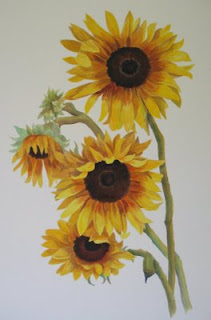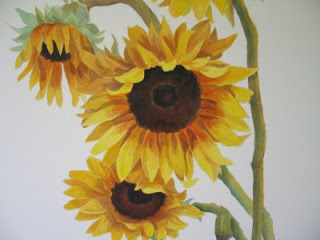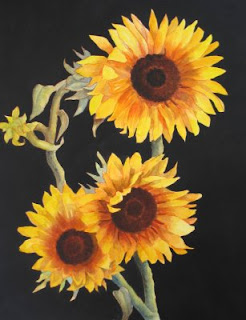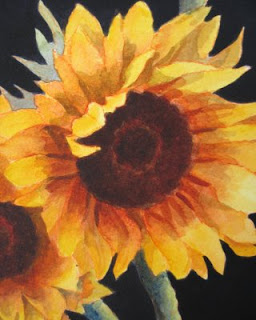 Birds of Paradise, acrylics on watercolor paper, 13.5" x 18.5"
Birds of Paradise, acrylics on watercolor paper, 13.5" x 18.5"This is the last of my experimental pieces, exploring the use of thin "watercolor" layers on watercolor paper, using the acrylic paints. For now, anyway. It's a very time consuming process. I've leanred more, and have added a couple more notes on the list of handling these. I waited too long to do my incised lines in the leaves, the color had already sealed in the paper, so I learned that incising lines must be done early on in the layering stages. I also learned here that the blending and lifting technqieus that we normally use in watercolors can be done, but must be done in the first or second layer. You can lift the paint, blot the paper, bleed two colors, but the paint DOES act a lot differently, and you have to be even more quick in these techniques than you would with watercolors. You CAN get really rich and vivid color though, and it's nice to be able to have a black background, or to build up really nice deep colors. And that's it, so far.




















